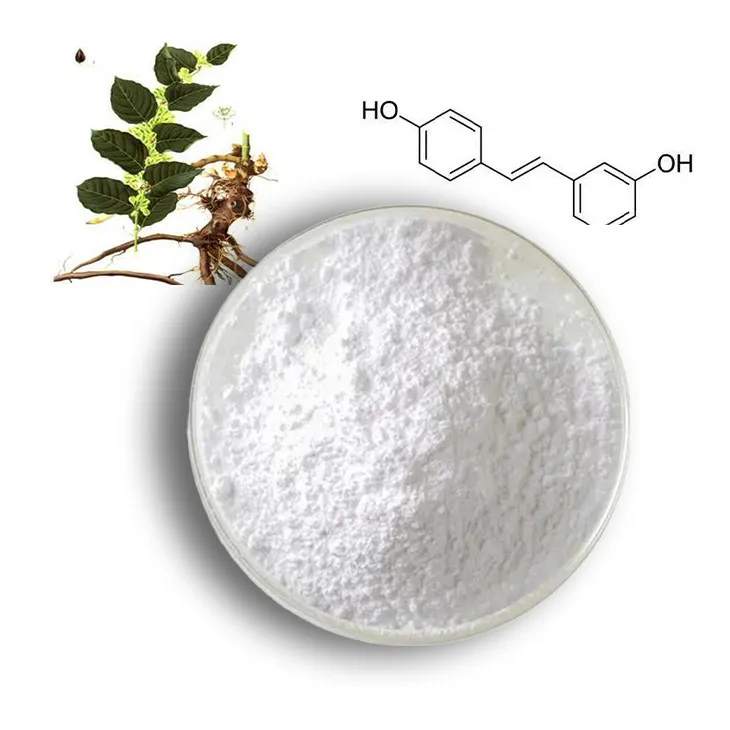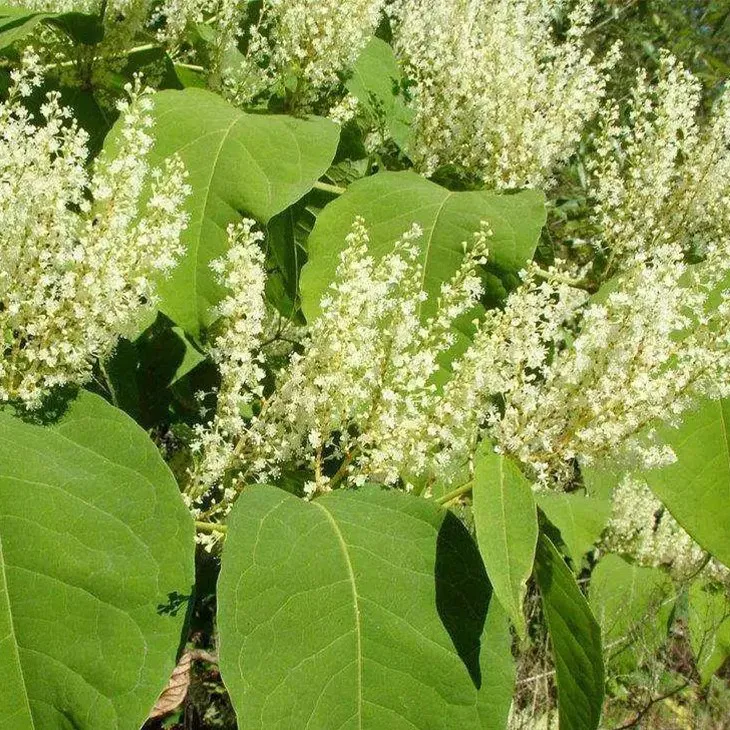- 0086-571-85302990
- sales@greenskybio.com
Japanese Knotweed: A Sustainable Source for Resveratrol Extraction and Its Cost Implications
2024-08-14

1. Introduction
Japanese knotweed (Fallopia japonica) has long been stigmatized as an invasive species in many parts of the world. However, it is now emerging as a potentially valuable resource, particularly for the extraction of resveratrol. Resveratrol is a natural compound that has attracted significant attention in recent years due to its numerous health benefits. These include antioxidant, anti - inflammatory, and anti - aging properties, among others. Currently, resveratrol is sourced from a variety of plants, but Japanese knotweed offers unique advantages that make it a worthy contender as a sustainable source.

2. The Abundance and Growth of Japanese Knotweed
Japanese knotweed is known for its vigorous growth. It can tolerate a wide range of environmental conditions, which has contributed to its invasive nature. In many regions, it has spread rapidly, colonizing areas such as riverbanks, roadsides, and abandoned lots. This abundance makes it an attractive source for Resveratrol extraction.
2.1 Adaptability
The plant can adapt to different soil types, from sandy to clayey soils. It is also relatively resistant to drought and can survive in areas with limited water availability. This adaptability means that it can be found in large quantities in diverse geographical locations, providing a potentially stable source of resveratrol.
2.2 Growth Rate
Japanese knotweed has a high growth rate. It can grow several meters in height within a single growing season. This rapid growth results in a large biomass production, which in turn can yield a significant amount of resveratrol. For example, compared to some traditional resveratrol - producing plants that may take years to reach maturity, Japanese knotweed can be harvested relatively quickly, allowing for more frequent extraction cycles.

3. Advantages of Japanese Knotweed for Resveratrol extraction
There are several key advantages to using Japanese knotweed as a source of resveratrol.
3.1 Cost - Effectiveness
- Lower Cultivation Costs: Since Japanese knotweed is invasive and grows abundantly without the need for extensive cultivation efforts, the cost associated with growing the plant for Resveratrol extraction is significantly reduced. In contrast, traditional resveratrol - source plants may require careful cultivation, including the use of fertilizers, pesticides, and specific irrigation systems, all of which add to the cost.
- Efficient Extraction: The chemical composition of Japanese knotweed may allow for more efficient resveratrol extraction methods. Studies have shown that the extraction process can be optimized to yield a relatively high concentration of resveratrol with fewer steps and less use of expensive solvents. This can further contribute to cost savings in the overall production process.
3.2 Sustainability
- Renewable Resource: Japanese knotweed's rapid growth and wide distribution make it a renewable resource for resveratrol extraction. As long as proper harvesting techniques are employed to ensure the plant's continued growth, it can provide a continuous supply of resveratrol.
- Environmental Management: Utilizing Japanese knotweed for resveratrol extraction can be a part of environmental management strategies. By harvesting the plant, its overgrowth can be controlled, reducing its negative impact on native ecosystems. For example, in areas where it has invaded natural habitats, controlled harvesting for resveratrol extraction can help restore the balance and biodiversity of the ecosystem.

4. Resveratrol and Its Health Benefits
Resveratrol has been the subject of extensive research due to its potential health - promoting properties.
4.1 Antioxidant Activity
- Resveratrol acts as a powerful antioxidant, scavenging free radicals in the body. Free radicals are unstable molecules that can cause damage to cells, DNA, and proteins. By neutralizing these free radicals, resveratrol can help protect against various diseases, including cancer, heart disease, and neurodegenerative disorders.
4.2 Anti - Inflammatory Effects
- It has been shown to have anti - inflammatory properties. Inflammation is a natural response of the body to injury or infection, but chronic inflammation can lead to a host of health problems. Resveratrol can modulate the body's inflammatory response, reducing the risk of conditions such as arthritis, diabetes, and obesity.
4.3 Anti - Aging Potential
- Resveratrol is also believed to have anti - aging effects. It can activate certain genes and cellular pathways that are associated with longevity. By doing so, it may help slow down the aging process, improve skin health, and enhance overall vitality.

5. The Extraction Process of Resveratrol from Japanese Knotweed
The extraction of resveratrol from Japanese knotweed involves several steps.
5.1 Harvesting
- The first step is to harvest the Japanese knotweed. This should be done at the appropriate time of the year when the resveratrol content is at its highest. Typically, the plant is harvested during the late summer or early fall. Care should be taken to ensure that the harvesting is sustainable, leaving enough of the plant intact for regrowth.
5.2 Pretreatment
- After harvesting, the plant material needs to be pretreated. This may involve cleaning the stems and leaves to remove dirt and debris, and then drying the plant material. Drying can be done using natural methods such as air - drying or with the use of drying equipment.
5.3 Extraction
- There are various extraction methods available for resveratrol from Japanese knotweed. One common method is solvent extraction. Organic solvents such as ethanol or methanol can be used to dissolve the resveratrol from the plant material. The choice of solvent depends on factors such as cost, safety, and extraction efficiency. Another method is supercritical fluid extraction, which uses supercritical carbon dioxide as the solvent. This method is often more environmentally friendly but may require more expensive equipment.
5.4 Purification
- Once the resveratrol has been extracted, it needs to be purified. This can be achieved through techniques such as chromatography, which separates the resveratrol from other compounds in the extract. Purification is important to ensure the quality and potency of the final resveratrol product.
6. Cost Implications of Using Japanese Knotweed for Resveratrol Extraction
The use of Japanese knotweed as a source of resveratrol has significant cost implications.
6.1 Reduced Raw Material Costs
- As mentioned earlier, the fact that Japanese knotweed is an invasive and abundant plant means that the cost of obtaining the raw material for resveratrol extraction is relatively low. There is no need to invest in large - scale cultivation, which can save a substantial amount of money compared to traditional resveratrol - source plants.
6.2 Processing Costs
- While the extraction and purification processes do incur costs, the efficiency of these processes with Japanese knotweed can help offset some of these expenses. For example, if the extraction method can be optimized to use less solvent or less energy, the overall processing cost can be reduced. Additionally, the relatively high resveratrol content in Japanese knotweed may mean that less plant material is required to obtain a given amount of resveratrol, further reducing processing costs.
6.3 Market Competitiveness
- In the market for resveratrol - based products, cost is an important factor. By using Japanese knotweed as a source, producers can potentially offer resveratrol products at a more competitive price. This can increase the market share of resveratrol - based products and also make them more accessible to consumers who may be interested in the health benefits of resveratrol but are deterred by high prices.
7. Challenges and Considerations
While Japanese knotweed shows great promise as a source of resveratrol, there are also some challenges and considerations that need to be addressed.
7.1 Quality Control
- Ensuring the quality of the resveratrol extracted from Japanese knotweed is crucial. There may be variations in the resveratrol content depending on factors such as the location of growth, harvesting time, and extraction methods. Therefore, strict quality control measures need to be in place to ensure that the final product meets the required standards.
7.2 Regulatory Approval
- Before products containing resveratrol from Japanese knotweed can be sold on the market, they need to obtain regulatory approval. This may involve demonstrating the safety and efficacy of the product through scientific studies. Regulatory requirements can vary from country to country, adding complexity to the process of bringing resveratrol - based products from Japanese knotweed to the market.
7.3 Public Perception
- Due to its invasive nature, there may be a negative public perception of using Japanese knotweed for any purpose. Educating the public about the benefits of using Japanese knotweed for resveratrol extraction and its role in environmental management may be necessary to overcome this perception.
8. Conclusion
Japanese knotweed has the potential to be a sustainable and cost - effective source for resveratrol extraction. Its abundance, growth characteristics, and the advantages it offers in terms of cost and sustainability make it an appealing option. However, challenges such as quality control, regulatory approval, and public perception need to be overcome. With proper management and further research, Japanese knotweed could play a significant role in the production of resveratrol - based products, providing a more accessible and environmentally friendly source of this valuable compound with numerous health benefits.
FAQ:
Question 1: Why is Japanese knotweed considered a sustainable source for resveratrol extraction?
Japanese knotweed is considered a sustainable source for resveratrol extraction because it is abundant and grows vigorously in many regions. This large quantity makes it a reliable and potentially inexhaustible source for resveratrol, which is beneficial for continuous production.
Question 2: What are the health benefits of resveratrol?
Resveratrol has numerous health benefits. It is known for its antioxidant properties, which can help protect cells from damage. It may also have anti - inflammatory effects, potentially reducing the risk of certain chronic diseases, and has been associated with cardiovascular health improvements, among other benefits.
Question 3: How can using Japanese knotweed for resveratrol extraction contribute to environmental management?
Using Japanese knotweed for resveratrol extraction can contribute to environmental management as it is an invasive species. By harvesting it for extraction, its overgrowth can be controlled, preventing it from outcompeting native plants and disrupting local ecosystems.
Question 4: Why might the cost of resveratrol extraction be lower with Japanese knotweed compared to traditional sources?
The cost of resveratrol extraction might be lower with Japanese knotweed compared to traditional sources because it is abundant and grows vigorously. The large supply of Japanese knotweed means that the raw material for extraction is more readily available, potentially reducing the cost associated with sourcing the plant material for resveratrol production.
Question 5: Are there any challenges in using Japanese knotweed for resveratrol extraction?
There may be some challenges in using Japanese knotweed for resveratrol extraction. For example, as an invasive species, there may be regulations regarding its handling and harvesting. Additionally, the extraction process itself may need to be optimized to ensure high - quality resveratrol extraction while dealing with any potential contaminants or differences in the plant's chemical composition compared to traditional resveratrol - rich plants.
Related literature
- Resveratrol: Sources, Bioavailability, and Potential Health Benefits"
- "Japanese Knotweed: Biology, Ecology, and Management"
- "Sustainable Extraction of Bioactive Compounds: The Case of Resveratrol from Invasive Plants"
- ▶ Hesperidin
- ▶ Citrus Bioflavonoids
- ▶ Plant Extract
- ▶ lycopene
- ▶ Diosmin
- ▶ Grape seed extract
- ▶ Sea buckthorn Juice Powder
- ▶ Fruit Juice Powder
- ▶ Hops Extract
- ▶ Artichoke Extract
- ▶ Mushroom extract
- ▶ Astaxanthin
- ▶ Green Tea Extract
- ▶ Curcumin
- ▶ Horse Chestnut Extract
- ▶ Other Product
- ▶ Boswellia Serrata Extract
- ▶ Resveratrol
- ▶ Marigold Extract
- ▶ Grape Leaf Extract
- ▶ New Product
- ▶ Aminolevulinic acid
- ▶ Cranberry Extract
- ▶ Red Yeast Rice
- ▶ Red Wine Extract
-
Scutellaria Extract
2024-08-14
-
Aguaje Extract
2024-08-14
-
Ginger Extract
2024-08-14
-
Camu Camu Extract
2024-08-14
-
Hops Extract
2024-08-14
-
Maitake Mushroom Extract
2024-08-14
-
Cassia Seed Extract
2024-08-14
-
Oat Straw Extract Powder
2024-08-14
-
Horse Chestnut Extract
2024-08-14
-
Polygonum multiflorum extract
2024-08-14





















